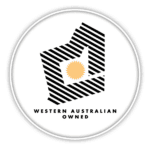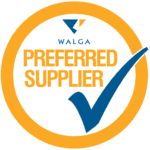Reflective signs play a pivotal role in maintaining safety and providing guidance across various settings, from bustling city roads to secluded industrial sites. Understanding the science behind these signs not only highlights their importance but also demonstrates how advancements in materials and technology contribute to our everyday safety.
This guide by Corsign delves into the materials used in reflective signs, explains how they work, and explores their applications in ensuring both road safety and industrial efficiency.
Materials used in reflective signs
Reflective signs utilise materials with retroreflective properties, engineered to direct light back to its source with minimal scattering. These signs often use retroreflective sheeting, made from tiny glass beads or microprismatic elements embedded in a substrate that adheres to the sign’s surface.
Glass bead technology, which embeds millions of tiny beads in the material, is particularly popular due to its cost-effectiveness and strong reflectivity; when light strikes these beads, it is reflected back towards the source. Meanwhile, microprismatic sheeting employs small prisms to reflect light more directly than glass beads, enhancing effectiveness under various conditions.
How reflective signs work
The principle behind reflective signs is based on the laws of optics, particularly the retroreflection mechanism. Here’s how it works:
Incidence of light: When light from a source, such as car headlights, hits the reflective surface of the sign, it strikes the reflective materials—either glass beads or microprisms.
Refraction and reflection: In glass bead technology, light is refracted inside each bead and then reflects back to its source due to a reflective coating. In microprismatic materials, light enters the prisms, reflects internally, and redirects back to the source.
Visibility for the observer: This reflected light travels back along the path of the incoming light, making the sign distinctly visible to the source. For a driver, this means that the sign appears much brighter than the surrounding darkness.
Applications of reflective signs
Reflective signs are utilised extensively across different fields. They play a particularly crucial role in road safety and industrial/commercial use:
Road safety
Reflective signs are indispensable for ensuring road safety, especially under conditions of poor visibility such as night driving, fog, or heavy rain. Here are some specific ways in which reflective signs contribute to road safety:
Guidance and direction: Reflective signs provide critical information on road layouts, helping to guide drivers safely around turns, exits, and intersections. They are particularly important in areas where street lighting is inadequate.
Speed regulation: Speed limit signs with reflective properties ensure that drivers can see and adhere to speed regulations, regardless of the time of day or weather conditions. This is crucial for preventing accidents in areas prone to high-speed driving.
Hazard warnings: Signs warning of potential hazards, such as sharp bends, school zones, pedestrian crossings, and animal crossings, are highly reflective to catch the driver’s attention quickly and effectively.
Weather-related guidance: In areas prone to extreme weather conditions, reflective signs warn drivers of likely hazards like slippery roads, flooding areas, or falling rocks, helping them to navigate safely.
Industrial and commercial use
In industrial settings and commercial complexes, reflective signs are critical for safety and efficient navigation. Their applications include:
Safety warnings: Reflective signs are used extensively to highlight hazardous areas or equipment within a facility. This includes signs for chemical storage areas, high voltage equipment, and restricted access zones.
Navigation within facilities: Large complexes and factories use reflective signs to help employees and visitors find their way around. These signs can indicate directions to various departments, emergency exits, and assembly points.
Operational efficiency: In many industries, especially those involving night shifts or operations in dimly lit areas, reflective signs help in identifying equipment and locations quickly, thus maintaining operational flow and reducing downtime.
Emergency protocols: Reflective signs are vital in emergency situations, providing clear visibility of exits and safety equipment like fire extinguishers and first aid kits. This is particularly important during power failures or when smoke or dust reduces visibility.
How Corsign can help with your signage needs
At Corsign, we specialise in creating high-quality reflective signs that are essential for safety and guidance in various settings. Whether you’re looking for road safety signs, industrial signage, or custom solutions for specific needs, here’s how we can assist:
Comprehensive product range
We offer a broad range of signage solutions tailored to different industries and requirements. Our products include road and traffic signs, safety and hazard signs, as well as custom signs designed to meet specific client needs. Whether it’s for local government, mining, civil construction, or traffic management, we have the expertise to provide the right signage.
Customisation and flexibility
Understanding that each client has unique needs, we provide fully customisable sign solutions. Our local manufacturing facility in Western Australia is equipped to handle both standard and bespoke orders, ensuring that we can adapt to any specific requirements you might have.
Quality and durability
We use only the highest quality materials to manufacture our signs, ensuring they withstand the harsh Australian environment and remain effective over time. Our signs come with warranties of up to 10 years, offering you peace of mind regarding their longevity and durability.
Expertise and accreditation
With over a decade of experience and a team with 80 years of collective knowledge in the signage industry, we’re experts in our field. We are ISO 9001 certified, and our products meet Australian Standards, ensuring they are safe and reliable. We are also approved by Main Roads Western Australia for permanent road signage.
Project support and management
From initial advice and estimates to installation and project management, we provide comprehensive support throughout your project. Our services are designed to make the procurement and installation of signage as seamless and stress-free as possible. We manage everything in-house, which means consistent quality and reliable timelines.
Conclusion
Reflective signs are indispensable tools that enhance visibility and safety in numerous environments. By utilising advanced materials like retroreflective sheeting and technologies such as glass bead and microprismatic sheeting, these signs ensure that critical information is visible in all conditions.
At Corsign, we specialise in providing high-quality reflective signs that meet the rigorous demands of road safety, industrial applications, and beyond. Whether you need standard signage or customised solutions, Corsign is equipped to deliver superior products and services that adhere to Australian Standards. Get in touch today.




